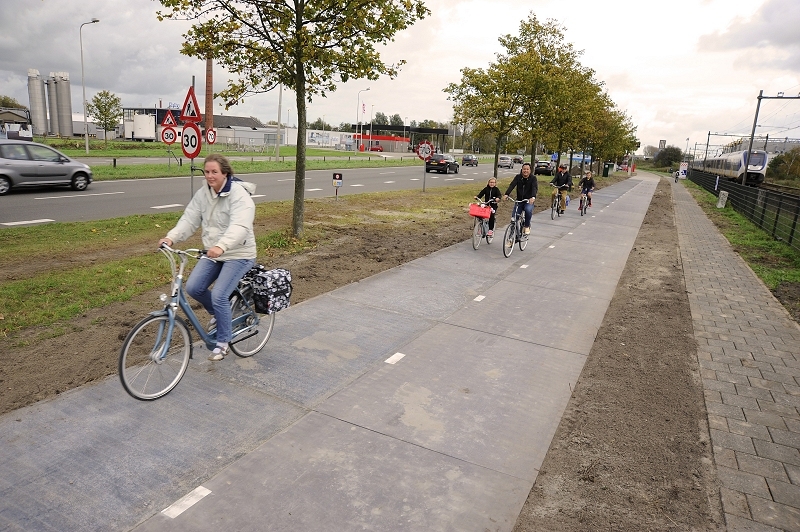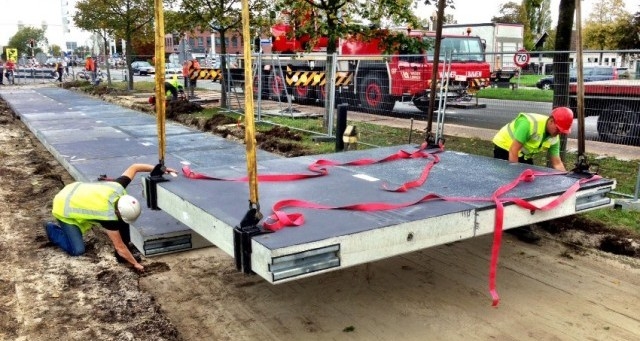
The Netherlands Organization for Applied Scientific Research is putting the finishing touches on a section of bike path connecting two Amsterdam suburbs. Once complete, the 230-foot stretch of path will be the first in the world to double as a solar panel collection grid.
The path, utilized by an average of 2,000 cyclists each day, was built using square concrete blocks with solar cells laid across the top. A 1cm thick piece of tempered glass covers the cells to protect them from pedestrians and the elements. While not very thick, the glass can reportedly withstand the weight of a truck without breaking.

It’s the first phase in a project that’ll eventually span 328 feet when complete in 2016. All said and done, the project – dubbed SolaRoad – will cost a whopping $3.74 million and produce enough electricity to light three homes. That’s not exactly the best use of funds, but I digress.
The panels aren’t optimized for maximum energy collection due to the fact that they are installed in a fixed position. They are, however, installed at a slight angle in hopes that rain water will help wash away dirt.
Scientists plan to monitor the path over the next three years to see exactly how much energy it can create and observe how it stands up over time. If successful, the potential exists to solarize up to 20 percent of the country’s roadways.